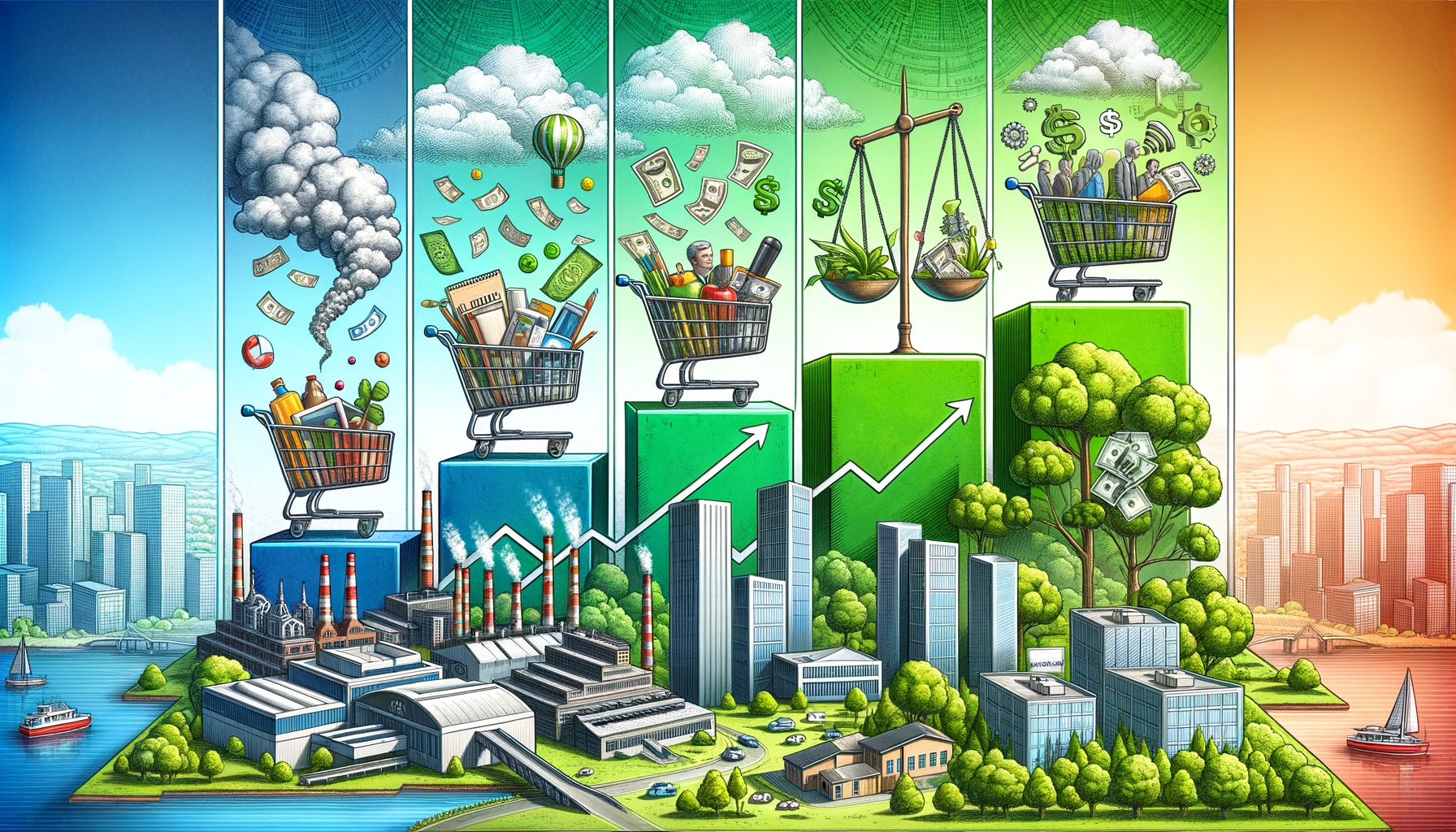“Decoding the 3.3% GDP Growth in the U.S Economy for Q4 of 2023: An Analysis”
In the final quarter of 2023, the American economy exhibited a robust growth rate of 3.3%. This corresponds to an acceleration compared to the 2.2% growth observed in the third quarter of the same year. The surge in the annual economic performance can be attributed to several dynamics, including increased consumer spending, business investments, and government spending. In the same vein, the figures related to unemployment were dismissed by the market, as most of the job losses emanated from temporary layoffs in the government sector. The American economy and the business environment are rapidly transforming, leading to economic expansions and contractions which will be discussed in subsequent sections of this article.
The majority of analysts had predicted that the Gross Domestic Product (GDP) of the United States would expand at a rate of approximately 3% in the last quarter of 2023. But the actual figures surpassed the estimates, signifying that the growth was stronger than anticipated. The solid growth rate marked an upward trend, suggesting that the U.S economy was on a growth trajectory.
Among the driving forces behind the solid economic performance was consumer spending, which showed an uptick in the last quarter. A report shows that consumer expenditures accelerated to a 3% pace from an earlier figure of 2.3%. Consumer spending constitutes about 70% of the U.S economy, so the increase greatly contributed to the GDP growth.
Another significant contributor was business investments, which expanded considerably in the last quarter. This was due to companies capitalizing on positive future growth projections and starting to invest more in equipment, technologies, and infrastructure. Consequently, this suggests that corporations are optimistic about the future economic landscape, even in light of the uncertainties that have plagued the global economy.
Interestingly, an unexpected pick up in government spending positively influenced the U.S GDP growth. Increased government expenditures indicate an active role of the state in stimulating the economy and supporting various sectors, which could boost GDP growth during uncertain times. Such increases in government spending frequently lead to improvements in infrastructure, education, and healthcare, among other essential areas that buttress the economy.
While the unemployment rate did increase to 3.5% in the last quarter, up from the previous rate of 3.3%, it should be taken into account that this reading largely resulted from temporary layoffs in the government sector. In other words, these job losses were not a reflection of negative economic conditions, as the private sector employment landscape remained stable.
Now, let’s delve into the inflation rate. According to the reports, there was an uptick in the inflation rate to 2.3% in 2023, up from the previous year’s baseline 2%. The increase could be associated with multiple causes, most notably higher energy prices and hikes in food costs. Nonetheless, the core inflation rate (which excludes the volatile prices of food and energy) remained unchanged, suggesting that underlying price pressures were well contained.
Going further and focusing on the real estate sector, we can touch upon the housing market dynamics. Strong market indicators could be traced in 2023, as home construction and private investment in residential property showed signs of resurgence. Low mortgage rates, combined with the expiring effect of the supply chain disruptions that were prominent in previous periods, were capable of rekindling the demand for homes, and thereby improving the housing sector.
The information presented previously unfolds an important narrative about the United States economy. It cherishes an environment conducive for entrepreneurs, where their businesses could grow and profit. The significant shift from traditional areas such as manufacturing to technology and a service-oriented economy underlines the constant evolution of the American business landscape.
In conclusion, although the U.S economy reflects signs of robustness with a growth rate of 3.3%, it is not immune to potential threats such as inflation, political uncertainty, and international trade disputes. The business community, policy-makers, and individual consumers will all need to play their roles effectively to continue nurturing this positive economic performance. As we continue to keep a close eye on these developments, one thing is clear: the economy is resilient, diverse, and consistently yields opportunities for those ready to seize them.

